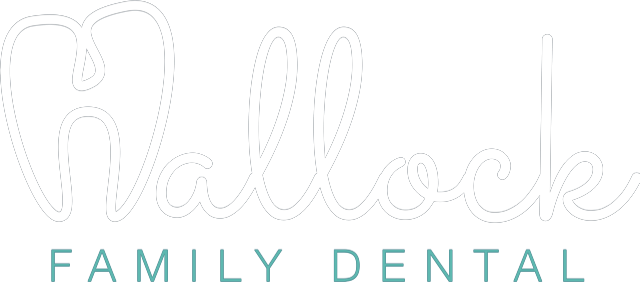As parents, ensuring your child’s health and well-being is a top priority, and dental health plays a significant role in that. Orthodontic issues can affect your child’s ability to eat, speak, and even feel confident about their smile. Many of these issues can develop during childhood, often going unnoticed unless you know what to look for.
Orthodontic problems are common, and some are more serious than others. Identifying these issues early can help you work with your child’s dentist or orthodontist to prevent complications down the road. In this blog, we’ll explore nine common orthodontic problems in kids, explaining what each one is, how it can impact your child’s smile, and why it’s important to address them.
1. Overbite
An overbite occurs when the upper teeth significantly overlap the lower teeth. This is one of the most common orthodontic issues seen in children. A mild overbite is typically normal, but if the overlap is severe, it can cause functional problems and impact the appearance of your child’s smile.
A pronounced overbite can lead to difficulties with chewing, speaking, or even biting into food. It can also increase the risk of tooth wear, gum damage, and jaw discomfort. In some cases, a severe overbite may contribute to issues with facial development, affecting the alignment of the jaw and the child’s profile.
2. Underbite
An underbite is the opposite of an overbite, where the lower teeth protrude beyond the upper teeth. This issue can be noticeable when a child’s mouth is closed, as the lower jaw appears to jut forward.
If left untreated, an underbite can lead to functional problems such as difficulty chewing, speaking, or biting food properly. It may also put excess pressure on the jaw joints and muscles, potentially causing pain or discomfort. In some cases, children with an underbite may feel self-conscious about their appearance, especially during the early stages of facial development.
3. Crowding of Teeth
Crowding occurs when there isn’t enough space in the mouth for all of a child’s teeth to grow in properly. This can result in teeth overlapping, twisting, or becoming misaligned. Crowding is often caused by genetics or early loss of baby teeth, which can disrupt the natural eruption of permanent teeth.
Aside from the aesthetic concerns, crowding can make it difficult for a child to clean their teeth effectively, increasing the risk of tooth decay, gum disease, and bad breath. If crowding is severe, it may also affect the overall development of the child’s jaw, leading to long-term oral health problems.
4. Crossbite
A crossbite occurs when the upper teeth are positioned inside the lower teeth, rather than overlapping them as they should. A crossbite can affect one or several teeth and can happen at the front or back of the mouth.
This issue may cause the child to develop an improper bite, resulting in uneven wear on the teeth and the potential for jaw pain, headaches, and tooth grinding. A crossbite can also cause the child to have difficulty chewing or speaking. In some cases, it can affect the symmetry of the face and lead to an imbalanced or uneven smile.
5. Open Bite
An open bite is characterized by a gap between the upper and lower teeth when the mouth is closed. This condition can be seen either at the front or back of the mouth, and it can occur when the upper and lower teeth do not meet properly.
An open bite can make it difficult for a child to chew and speak clearly. It can also lead to tongue thrusting, which may exacerbate the issue. If left untreated, an open bite may hinder proper jaw alignment, affecting facial growth and contributing to discomfort. In some children, an open bite may be linked to habits like thumb sucking or prolonged use of pacifiers, which can prevent teeth from aligning properly.
6. Spacing Between Teeth
Spacing refers to gaps between the teeth, often caused by missing teeth or discrepancies in the size of teeth and jaw. A certain amount of spacing is normal during the eruption of teeth in children, but excessive spacing can cause both functional and aesthetic concerns.
While gaps between teeth may not directly affect a child’s bite or ability to chew, they can be a source of self-consciousness, particularly in older children or adolescents. Spacing can also create spaces where food can become trapped, increasing the risk of tooth decay and gum disease. In some cases, the gaps may allow the teeth to shift, contributing to additional orthodontic problems over time.
7. Mouth Breathing
Mouth breathing is a common issue that many children develop, often as a result of allergies, enlarged tonsils or adenoids, or chronic nasal congestion. Breathing through the mouth rather than the nose can impact both the development of the child’s teeth and facial structure.
Chronic mouth breathing can cause the upper jaw to narrow, leading to crowding of the teeth and an improper bite. It can also lead to dry mouth, which increases the risk of cavities and gum disease. In addition, mouth breathing can contribute to poor oral posture, which affects the alignment of the teeth and the development of the jaw.
8. Protruding Teeth
Protruding teeth, or “buck teeth,” occur when the upper teeth are positioned too far forward compared to the lower teeth. This issue can be a result of thumb sucking, genetic factors, or abnormal jaw development.
Protruding teeth can affect a child’s self-esteem, particularly as they enter school or adolescence. More importantly, they can increase the risk of injury to the teeth, especially during physical activities or sports. Children with protruding teeth may also experience difficulties with biting or chewing, and they may develop speech issues due to the misalignment of their teeth.
9. Misalignments of the Jaw
Misalignments of the jaw, also known as malocclusions, can occur when the upper and lower jaws do not align properly. This can result in an overbite, underbite, or crossbite, as well as difficulty with chewing, biting, and speaking.
Misalignments of the jaw can affect a child’s overall facial appearance and may cause discomfort or pain in the jaw and teeth. If left untreated, jaw misalignments can contribute to long-term oral health issues, such as tooth wear, gum disease, and TMJ (temporomandibular joint) disorders. In some cases, jaw misalignment may impact the child’s ability to breathe properly, contributing to further complications.
Early Detection and Intervention Can Make A Difference
Orthodontic problems can range from minor annoyances to more serious issues that affect a child’s quality of life. Early detection and intervention can help prevent these problems from worsening and ensure that your child enjoys a healthy, confident smile as they grow.
If you notice any of the signs of these orthodontic problems in your child, it’s a good idea to consult with your family dentist. They can assess your child’s oral health, identify any potential issues, and recommend appropriate treatments to improve their dental development.
Hallock Family Dental Offers SureSmile Aligners
The team at Hallock Family Dental looks forward to helping your family maintain healthy teeth, gums, and mouths through every stage of life, with two locations in Texas for your convenience. Whether you need cosmetic or restorative dentistry, surgical services, or a twice-a-year check-up, our family-owned practice is committed to providing you with top-quality, personalized service. Call our Allen location at 972-390-7200 or our McKinney location at 972-547-1775 to learn more about how we can help you and your family have the healthiest, brightest smiles possible.

